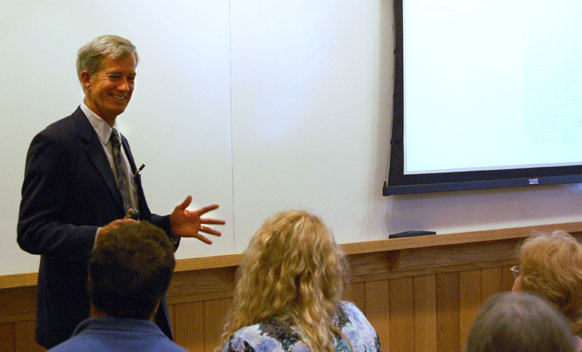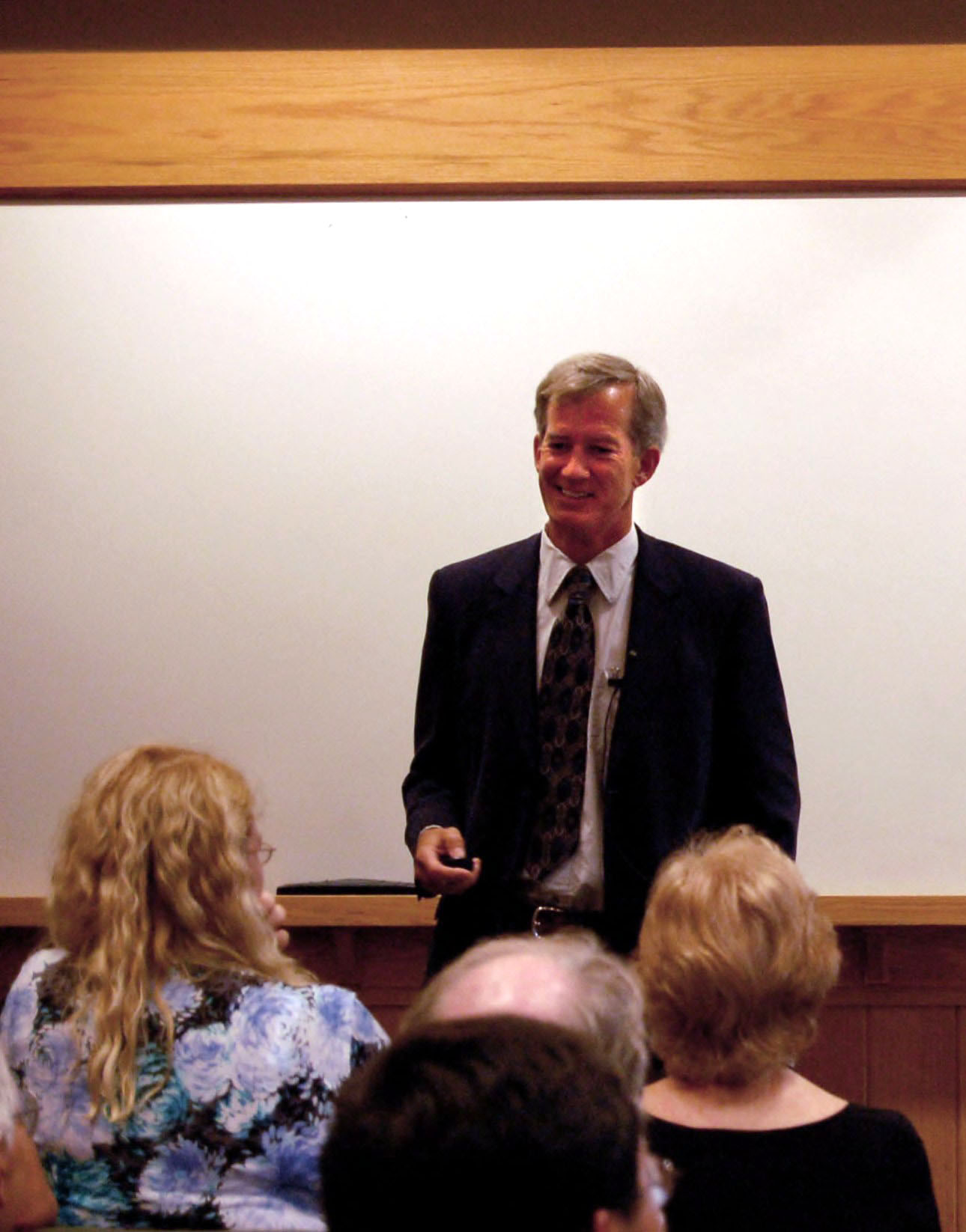- About MAA
- Membership
- MAA Publications
- Periodicals
- Blogs
- MAA Book Series
- MAA Press (an imprint of the AMS)
- MAA Notes
- MAA Reviews
- Mathematical Communication
- Information for Libraries
- Author Resources
- Advertise with MAA
- Meetings
- Competitions
- Programs
- Communities
- MAA Sections
- SIGMAA
- MAA Connect
- Students
- MAA Awards
- Awards Booklets
- Writing Awards
- Teaching Awards
- Service Awards
- Research Awards
- Lecture Awards
- Putnam Competition Individual and Team Winners
- D. E. Shaw Group AMC 8 Awards & Certificates
- Maryam Mirzakhani AMC 10 A Awards & Certificates
- Two Sigma AMC 10 B Awards & Certificates
- Jane Street AMC 12 A Awards & Certificates
- Akamai AMC 12 B Awards & Certificates
- High School Teachers
- News
You are here
Primes and Zeros: A Million Dollar Mystery
The Riemann Hypothesis has, for more than a century and a half, resisted every attempt at proof or disproof. Along the way, this key question about the distribution of prime numbers has developed a mystique among the many mathematicians obsessed with the problem.
At an MAA Distinguished Lecture on July 28, Brian Conrey, executive director of the American Institute of Mathematics, provided a fascinating tour of this unsolved problem’s history and presented evidence of its hold on the imaginations of mathematicians.
- In the 1930s, when G.H. Hardy once embarked on what promised to be a stormy sea voyage, he wrote a postcard to a friend declaring that he had proved the Riemann Hypothesis. He reasoned that God would not allow him credit for such a great honor, so would keep the boat from sinking.
- Thomas Jan Stieltjes claimed in 1885 to have proved a statement that implied the Riemann Hypothesis, and he was widely believed. He never wrote down the proof.
- In a 1997 email message that was forwarded around the world, Enrico Bombieri announced that a young physicist, inspired by a lecture on the topic at the Institute for Advanced Study, had proved the Riemann Hypothesis. This sensational message fooled many people who didn’t notice that it had been sent on April 1.

Conrey began with primes: numbers evenly divisible by only themselves and 1. The first few prime numbers are 2, 3, 5, 7, 11, and 13, but the list continues forever. There is no largest prime number.
Although they are simply defined, the prime numbers hold many mysteries for mathematicians.
One such mystery is how the prime numbers are distributed among the integers. On the surface, the distribution of primes seems unpredictable, but some trends are evident.
They thin out, for instance, with larger primes rarer than smaller primes, but how quickly? There are 25 primes less than 100 (25%), 168 primes less than 1,000 (16.8%), and 1,229 primes less than 10,000 (12.29%). Based on such evidence, Carl Friedrich Gauss estimated that the number of primes less than or equal to x, denoted π(x), is about x/ln(x). In 1896, Jacques Hadamard and Charles de la Vallée Poussin independently proved this estimate to be true, establishing the Prime Number Theorem.
Gauss kept on searching for a formula that better approximates π(x). He made extensive calculations by hand. “He used to spend an idle fifteen minutes calculating the number of primes in a chiliad,” Conrey said. A chiliad is a block of a thousand numbers.
Conrey himself had a chance to examine (and decipher) a large set of cards on which Gauss recorded his statistical forays into the distribution of primes, stored among other records at Göttingen.
Such tables enabled Gauss to come up with a more precise estimate for π(x): 1/ln2 + 1/ln3 + 1/ln4 + . . . + 1/lnx, plus a small error term. This conjecture turns out to be “astonishingly good,” Conrey said, “and the whole question of the Riemann Hypothesis is, why is this so good?”
Bernhard Riemann formulated his 1859 hypothesis on the distribution of primes in terms of the behavior of a function now known as the Riemann zeta function. “It was Riemann who . . . figured out that . . . you have to study where that function is equal to zero,” Conrey said.
All the zeros lie in the critical strip, a region of the complex plane consisting of the complex numbers with real parts between 0 and 1. The complex numbers with real part ½ form a line in the complex plane, known as the critical line, down the center of the critical strip. The Riemann Hypothesis states that all of the zeros of the Riemann zeta function lie on the critical line.

We now know that an infinite number of zeros lie on the critical line (Hardy, 1914), that at least 40% of the zeros lie on the critical line (Conrey, 1989), and that the first ten trillion zeros all lie on the critical line (Gourdon, 2004). A proof (or disproof) that all the zeros lie on the critical line still eludes us, more than 150 years after Riemann made this hypothesis.
In 1900, David Hilbert presented twenty-three unsolved problems to guide the next century of mathematical research. The eighth was the Riemann Hypothesis. Hilbert predicted it would be solved within a few years. A century later, the Clay Mathematics Institute identified seven unsolved Millennium Prize Problems and offered $1 million for each solution. The Riemann Hypothesis is the only problem to appear on both lists.
Conrey has done research on the Riemann Hypothesis, and he understands its appeal. “There’s a complexity to the zeta function that we have not been able to grasp,” Conrey said. “One of the reasons it’s so tantalizing is it really is sort of an elementary function, but we really don’t understand it.”
The Riemann Hypothesis surely will continue to captivate some of the world’s greatest mathematical minds. Conrey hopes he’ll live to see it solved. —Rachel Kirsch
Rachel Kirsch is a summer intern at MAA headquarters working in the publications department.

This MAA Distinguished Lecture was funded by the National Security Agency.





